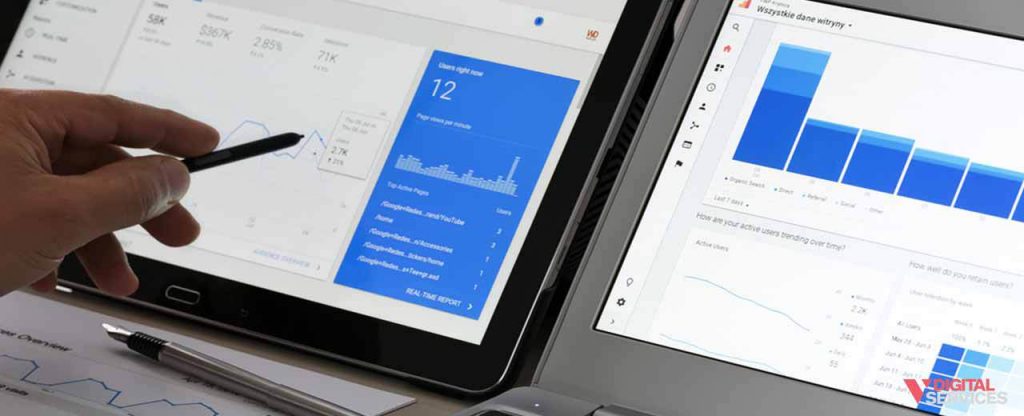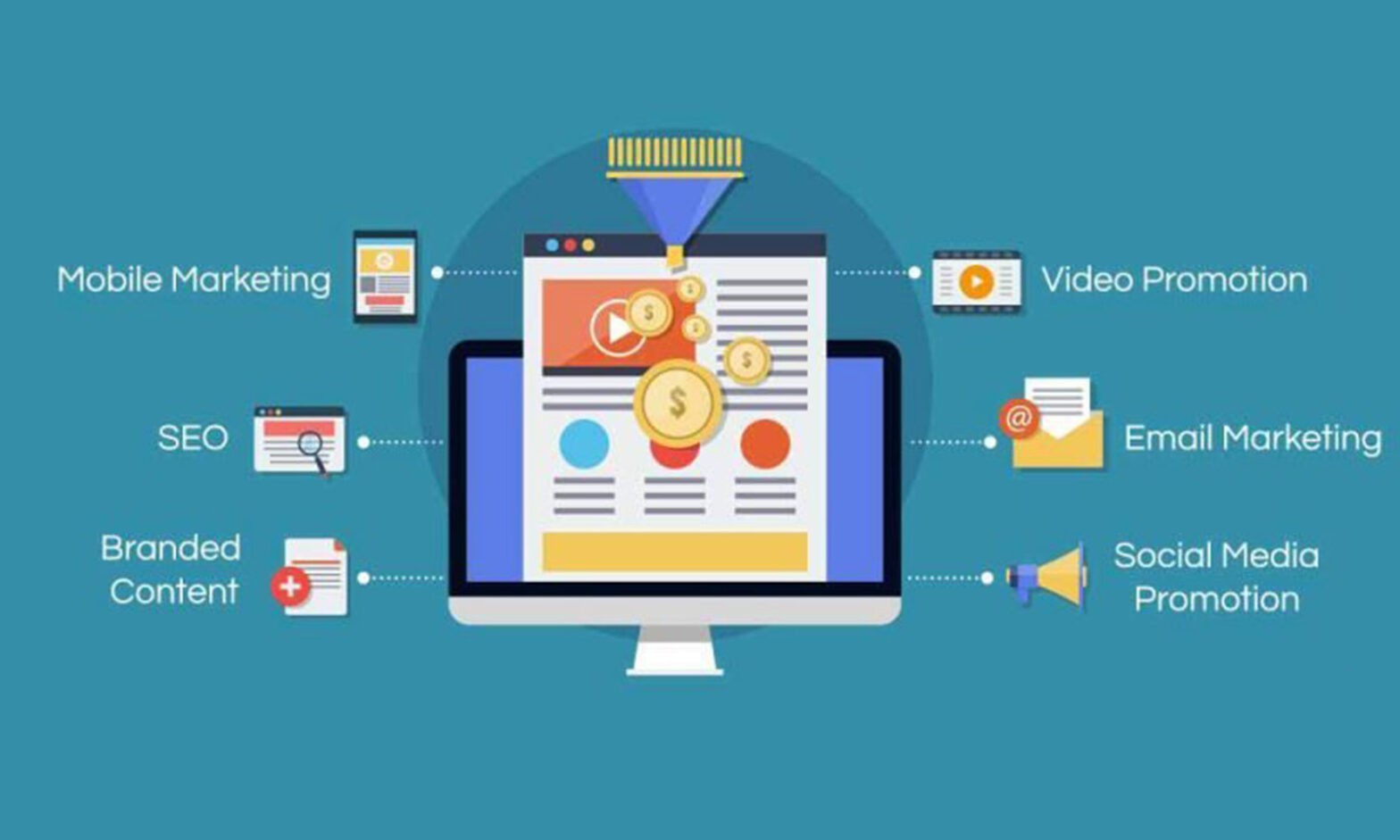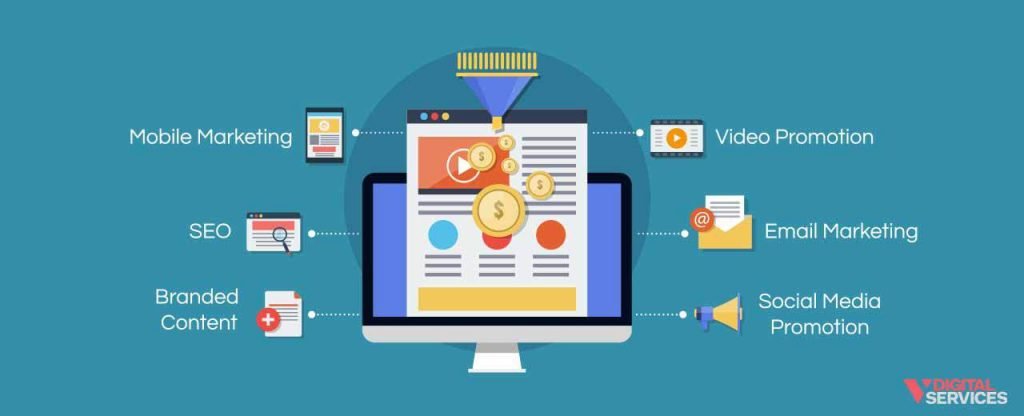Whether you’re taking your first foray into the world of digital marketing, or you’ve been here for quite some time, mastering all of the various terms and metrics is no small task. If it seems like digital marketing has a language all its own, that’s because it does – but once you learn that language, there’s no stopping you.
“Conversion rate” is one of the most commonly used terms in digital marketing, usually used in the context of describing the success of a specific campaign. Even if you can’t quite define the term yet, you’ve probably figured out that a higher conversion rate is generally equated with a higher marketing success rate. And in turn, that brings better profitability for your business.
We’ve created a guide to teach you everything you need to know about conversion rates, including what they are and how to calculate the conversion rate for your website. Plus, we’ll cover effective strategies for increasing conversion rates and making progress towards your marketing goals.
What is Conversion Rate?
In simplest terms, the conversion rate is the exact percentage of online users that visit your website or landing page and then “convert.” Converting can look like anything, but ultimately, it’s a website visitor completing the specific action that you want them to. The specific conversion itself will depend on your marketing plan and larger goals, which is why it can take so many different forms.
For example, here are some of the most common types of conversions:
- Submitting a form (such as a lead generation form or a contact information form)
- Making an appointment or reservation
- Making a purchase
- Interacting with your online chat service
- Contacting your business via phone or email
- Registering as a user on the website
- Signing up for a paid or free subscription (such as an email newsletter)
- Downloading something (such as a mobile app, free trial, or eBook)
- Using a feature or your app
- Upgrading existing services they receive from your company
- Engaging with your website in other ways (measured by metrics such as number of repeat visits, time spent on site, number of pages visited, etc.)
You might see some of your goals on the list above, or your ideal conversions might be more specific to your business. Essentially, the purpose of a conversion is to serve as a measurable action that an online user takes, supporting their progress through the sales funnel to eventually become a paying customer.
Tracking Conversion Rate
Before you start searching for an online conversion rate calculator (hint: you’re not going to need one after reading this guide), you’ll need to make sure you’re actually tracking conversions. Conversion rate may be just one of the many ways to measure your success, but it is a highly effective means for assessing the quality of your marketing campaigns and website as a whole.
There are many options for tracking conversion rates within popular advertising and analytics platforms, so gathering your data shouldn’t require that much extra effort. The exact process for implementing tracking will vary by platform, but you can typically find step-by-step guides in each site’s help or support sections.
Here are some of the most widely used platforms out there, all of which offer conversion rate tracking capabilities:
- Google Analytics
- Google Ads
- Facebook Ads
- Instagram Ads (part of Facebook)
- Twitter Ads
- Pinterest Promoted Pins

The easiest way to set up conversion tracking is to partner with a professional. However, if you’re flying solo, for now, it’s worth investing the time and brainpower into figuring out how to do it yourself.
Getting meaningful data with the right time frames
When you begin learning how to track conversions, keep in mind that there are many factors that can affect the quality of your data. Without a doubt, the time frame of your conversion data carries the most significant weight. Here’s why.
Imagine that you have a web page that shows a 100% conversion rate – great news, right? Well, once you realize that there was only one visitor within the time frame, that 100% rate isn’t quite as impressive.
Without a large enough time frame, it can be difficult to collect a meaningful traffic sample. Your results can be easily skewed, and the process ends up being unproductive. Situations like accidental conversions, low traffic rates, random periods of high or low conversions, and others will dramatically impact a small time frame or sample. But with a larger, well-rounded sample, you can more confidently trust your results.
There’s not necessarily just one “right” timeframe for tracking conversion rates, especially because every business and marketing campaign is different. A month is often a good rule of thumb, but small businesses might find that they need several months to collect substantial data.
Why conversion tracking is so important
We probably don’t need to explain why it’s important to track conversion rates, but just in case: if you don’t know how to track and calculate conversion rates, how will you know whether or not your marketing efforts are working?
It’s virtually impossible to optimize a website or a marketing campaign if you don’t have the data to direct your course of action. You’ll end up taking shots in the dark, aimlessly implementing new ideas with no real way to determine if they’re effective or not.
On the other hand, being well-prepared to track, calculate, and analyze conversion rates will give you an edge over your competition. You’ll be able to take smarter steps towards improvement, saving yourself considerable time and energy (and expense) by decreasing wasted marketing efforts.
One of the many benefits of conversion rates is that they can be very specific or extremely broad – it’s completely up to you. Different types of conversion rates allow you to evaluate different aspects of campaign and website performance, making them one of the most versatile metrics in marketing. Here are just some of the ways you can use conversion rates to measure performance:
- Overall conversion rate: How effective is your website at converting visitor traffic from any source?
- Campaign conversion rate: How well did specific targeting improve conversions?
- Marketing channel conversion rates: Which channels (e.g., Facebook Ads, Google Ads) produce more conversions?
- Individual ad conversion rates: Do certain ads drive more highly-qualified traffic and result in more conversions? Which ones underperform?
- Page-level conversion rate: Which web pages convert more traffic?
- Keyword conversion rate: Are there certain keywords outperforming others? If so, should I dedicate more budget to these keywords?
Conversion rates allow you to answer all of the questions above and more. But more importantly, they empower you to take the next step in marketing optimization: asking why your conversion rates are better in certain situations than others.
Learning what strategies, mediums, and channels deliver the best conversion rates can help you become a better marketer and a better business owner in general.
How to Calculate Conversion Rate
Learning how to calculate conversion rates might sound intimidating, but it’s actually fairly straightforward. The conversion rate formula itself is pretty simple and requires only basic math.
Here is a step-by-step guide to calculating conversion rate:
-
- First, find the number of people that visited your site or landing page within a given timeframe.
- Then, find the number of conversions within that same timeframe. 3
- Divide the number of conversions by the number of visitors.
- Multiply that result by 100% to calculate the conversion rate total.
So, the conversion rate formula is as follows:
(Conversions / Total Visitors) x 100% = Conversion Rate Total
Let’s walk through an example so you can see the formula in action:
Say your website had a total of 12,000 visitors and 1,500 conversions. First, you would divide 1,500 by 12,000 and get 0.125. Multiply 0.125 by 100%, and you end up with a conversion rate total of 12.5%.
(1,500 / 12,000) x 100% = 12.5%
Many analytics and online advertising platforms will calculate the campaign conversion rate for you, but it’s always helpful to be able to do it yourself.
Conversion rate vs. click conversion rate
A common assumption is that conversion rate and clicks conversion rate are the same thing. However, they’re actually each a distinct metric, though both are equally informative:
- As we’ve covered, the conversion rate is the total number of conversions divided by the total number of visitors
- Click conversion rate calculates the percentage of visitors that converted, without counting multiple conversions by a single visitor more than once
As you can see, your conversion rate doesn’t account for a single visitor that may have completed multiple conversions. For example, one person might make a purchase, sign up for your email list, and complete a form for additional service information. The conversion rate would consider that three conversions, whereas the click conversion rate would consider it one.
It’s not unusual for businesses’ click conversion rates to be either identical or very close to their conversion rates, which is why the terms are so often used interchangeably.
What is a Good Conversion Rate?
It’s impossible to say what the “best” conversion rate is, mainly because the rates can differ so dramatically. Everything from your industry and business size to your traffic quality and tracked conversion action is going to alter your concept of a successful conversion rate.
While you might see statistics that discuss conversion rates, a good conversion rate is ultimately going to come down to what matters for your business and the specific marketing campaign.
Let’s take a closer look at an example to see this idea in action.
A construction and remodeling company is currently averaging about $3,500 in total revenue for every new paying customer, which comes out to a 50% profit margin. They have five active marketing campaigns, all of which aim to convert an online user submitting a lead generation form on their website.
When they assess conversion rates, the totals come back as follows:
- Campaign 1: 15%
- Campaign 2: 10%
- Campaign 3: 8%
- Campaign 4: 8%
- Campaign 5: 10%
At first glance, it would seem like Campaign 1 wins with the “best” conversion rate, while 3 and 4 are in need of improvement. But conversion rate alone doesn’t give us the full picture. What is the actual profitability of these campaigns? How many leads are actually turning in sales? Going off of the conversion rate, we can’t say.
However, there is more data that can give us a better idea. The return on investment (ROI) for each campaign is the key to answering those questions.
When the company reviews ROI per campaign, here are the results:
- Campaign 1: 310%
- Campaign 2: 275%
- Campaign 3: 88%
- Campaign 4: 775%
- Campaign 5: 414%
With that data in hand, it’s much easier to see which of the campaigns are delivering the biggest payoff. Despite having a conversion rate of 15%, Campaign 1 doesn’t even come close to providing the biggest ROI. Instead, it’s campaign 4 – which had a conversion rate of just 8% – that offers the biggest bang for their buck.
This is the perfect example of how conversion rate is a useful piece of data, but it isn’t the gold standard for measuring campaign success. It’s just one piece of a much larger puzzle, and it’s vital that you zoom out from conversion rate to truly understand what’s working and what’s not.
Conversion Rate Optimization: How to Improve Your Conversion Rate
Now that you’ve learned what a conversion rate is, how to calculate it, why it’s valuable, and how to use it, it’s time for the next step: conversion rate optimization (CRO).
CRO is a series of steps you take to optimize your website and landing page, with the ultimate goal being an increase in the total number of conversions. With CRO, you focus on improving conversions without necessarily needing to grow traffic. Instead, you’re finding ways to make the most of existing traffic – working smarter, not harder.
Even raising your conversion rate by a few percentage points can make a big difference for profitability, making CRO a foundational part of any solid digital marketing plan. So, what’s the best approach to CRO? There are many different ways you can tackle the task, but here are some basic steps to get you started.
Start by testing your website.
With CRO, you’re honing in on lost conversions. Why aren’t those users converting, and what can you do to change that?
Conducting a test to assess your website is a good place to begin. You can get a clearer idea of your site’s strengths and weaknesses, empowering you to make targeted improvements with CRO in mind.
Here’s how to start CRO for a website now:
1. Build a dedicated landing page.
Paid advertising should always be paired with a landing page, primarily for the purpose of page optimization. You’re spending money to bring traffic to your site, so it makes sense to send them directly to a page that’s designed to sell.
Landing pages also have the benefit of being excellent candidates for CRO. If you’re currently sending paid ad traffic to your homepage, construct a landing page as a first step.
2. Devise a hypothesis.
Like any good experiment, CRO tests must have a hypothesis. This means that you’ll need to consider your site elements, then make informed guesses about which ones play the biggest roles in conversion and profitability.
Some site elements that can serve as a good basis for a hypothesis include:
- Call to action (CTA): Even seemingly minute changes to your CTA can end up having a big impact on your audience, so it’s normal to spend at least a few tests learning what makes a good CTA for your target customers.
- Headline: You already know that a large portion of users never gets any further than the headline, making it a critical element for your site. If you test nothing else, running a CRO test on your headline is a must.
- Offer: What seems like the perfect offer layout and language might not land in the way you would expect – and that’s okay. Experiment with varying descriptions and page layouts so you can discover which seem to resonate the best.
- Media: In some cases, the addition of a new video or picture can be the secret to sealing the deal.
With a hypothesis and at least two different designs, you’re ready to start the testing process.
3. Conduct an A/B test.
The A/B test is one of the simplest ways to navigate CRO and is the most effective route for the majority of businesses.
Learning how to set up an A/B test is more simple than you’d think. Build two different variants of a page, then create two routes that evenly divide your traffic between each. So, half of your traffic will be directed to page variant A, while the other half goes to page variant B.
A/B testing does require CRO software, but there are plenty of programs to choose from. You can stick with something inexpensive and fairly no-frills, or you can invest in a high-performance solution with all the bells and whistles. Platforms such as Google Optimize and Unbounce are excellent choices for beginning CRO.
Using your selected CRO software, you will then analyze which of the page variants produces the highest conversion rate. Then, you can pinpoint the more effective design/element and apply that to your website.
Then, refine your website traffic.
You can also increase your conversion rate by honing in on the quality of your traffic. If the majority of your traffic comes from Google organic search results, then this isn’t necessarily an ideal route. However, if you’re using a pay-per-click (PPC) campaign, then you can use this method with more success.

Testing website traffic can help you assess whether or not you’re sending the right type of traffic (qualified traffic) to your page. Even under perfect conditions, the wrong traffic won’t result in conversions. So, the goal isn’t just to get people to your page; it’s to get the right people there.
Long before you consider evaluating your traffic, you should be doing a deep dive into your target audience. Learn as much about them as possible, and use those details to construct a better-suited strategy for targeting. Also, the advertisement should maintain a clear connection between your target audience’s needs/wants and the content of the landing page. That way, only users that would need/want what’s available on your landing page will click on the ad.
If you think that this means you’ll need to get pretty specific with your marketing materials, you’re right. Getting granular with strategies such as social media targeting options, single-keyword ad groups (SKAGs) for PPC, and others can have a marked impact on conversion.
Finally, find what works and then concentrate your budget in those areas. Stop wasting money on the strategies that aren’t performing, and instead invest in those that do. With the right audience on strategically-constructed pages, you’ll be well on your way to seeing your conversion rate climb!
Boost Conversion Rates with Smart Strategies from V Digital Services
Oftentimes, finding effective ways to bridge the gap between your conversion goals and actual conversion rates can be one of the biggest challenges to your marketing efforts. Maybe you’re still struggling to drive the right traffic to your site, or maybe it’s turning clicks into conversions that have you stuck. Whatever obstacles are standing between you and your conversion goal, V Digital Services can help.
We’re a full-service digital marketing agency with years of industry experience and a diverse portfolio of clients, and our team is always ready to take on a new challenge with enthusiasm, creativity, and a strategic perspective. Instead of the same-old formula that other marketing agencies tend to hand out, VDS prefers to take a more tailored approach to find solutions that suit your unique goals, needs, and business. We’re prepared to help you propel your total number of conversions beyond your goal, supporting you in achieving short- and long-term goals alike.
Learn the best ways to boost your brand and business conversion rate by contacting V Digital Services today!
Featured Images: Sammby/Shutterstock



 PREVIOUS
PREVIOUS
Conversion rate is so important to marketing, it is worth figuring out how to boost it. There is so much that goes into preparing a good digital marketing plan that conversion rates are useful in assessing how the program is performing.